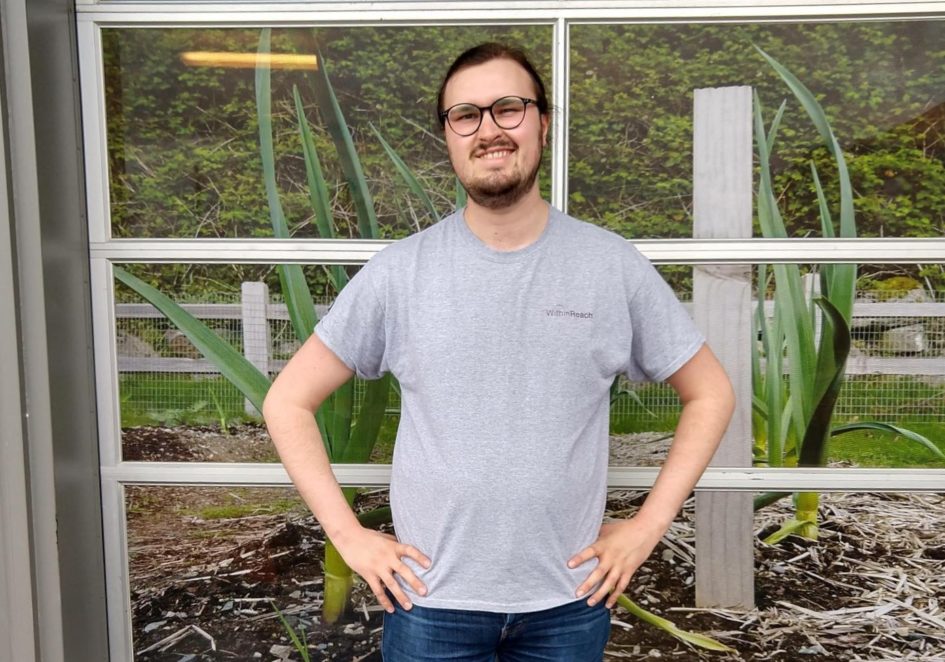May 9, 2019
Food Insecurity on College Campuses

My name is Tom and I am a recent college graduate serving as an AmeriCorps member at WithinReach. As part of my job, I go to colleges around King County and connect students with resources needed for a healthy and thriving life. Many of the students I see struggle to find food and many do not realize that there are valuable food assistance programs and services that they may qualify for. According to a study by the Hope Lab, a non-profit focused on creating more opportunities for college students by addressing policies and practices, 56% of community college students are food insecure (2017). The United States Department of Agriculture defines food insecurity as the lack of consistent access to enough food for an active and healthy lifestyle.
Food insecurity varies from person to person; examples of food insecurity can be the inability to eat balanced meals or skipping meals because one cannot afford enough food to eat. Food insecurity not only affects the health of college students, but also impacts their academic performance. Hope Lab found that “low food security leads to worse GPAs and course completion rates. For example, several researchers have found that food insecurity is correlated with lower grades in college.” However, there are tools that college students can access to improve their food security, such as food banks, Basic Food (also known as SNAP in other States), or United Way of King County’s Benefits Hub, which we featured in our previous blog.
On-campus food pantries are one method that colleges are using to combat student food insecurity. In Washington State, food pantries have popped up across college campuses. At Highline College the food pantry is open to all students, faculty and staff three days a week and is run by the Des Moines Area Food Bank in partnership with United Way of King County. Other schools, like Bellevue College, offer bags of non-perishable food, provided by Hopelink, which students can come and grab with no questions asked—helping to decrease additional barriers for students. Outside of King County, Clark College has Penguin Pantry, a food pantry where students can get groceries and toiletries.
Another option for students facing food insecurity is Basic Food, which provides monthly benefits to buy food and groceries. However, many students do not realize that they are eligible for these public benefits. According to a study in California (Hope Lab) only 20% of eligible students actually receive Basic Food. There are special eligibility requirements for students to enroll in Basic Food, such as working 20 hours per week or taking care of a child.
Students who do not meet the specific eligibility requirements can still qualify for Basic Food through Basic Food Education & Training (BFET)—a program that helps low income students pay for college tuition as well as other expenses, such as transportation and child care. BFET also helps students in approved professional programs and GED classes.
College students often do not know where to turn when they do not have enough to eat, fortunately WithinReach can help point students in the right direction.
If you are a college student who is struggling to find enough to eat or knows of a student who is food insecure, there are a few ways that you can receive help.
- Call WithinReach’s Family Health Hotline at 1-(800) 322-2588. With just one phone call we can see what programs you are eligible for, connect you to much needed services and even help you apply for Basic Food on the spot.
- Interested in signing up for BFET? Start Next Quarter can help you connect to colleges and figure out financial assistance for paying for school.
- Students enrolled in specific colleges in King County can visit Benefits Hub and get assistance with financial coaching, help in paying for school and even housing assistance.
- Utilize your college’s resources. Ask your college if they have a student food pantry on-campus or one nearby.




